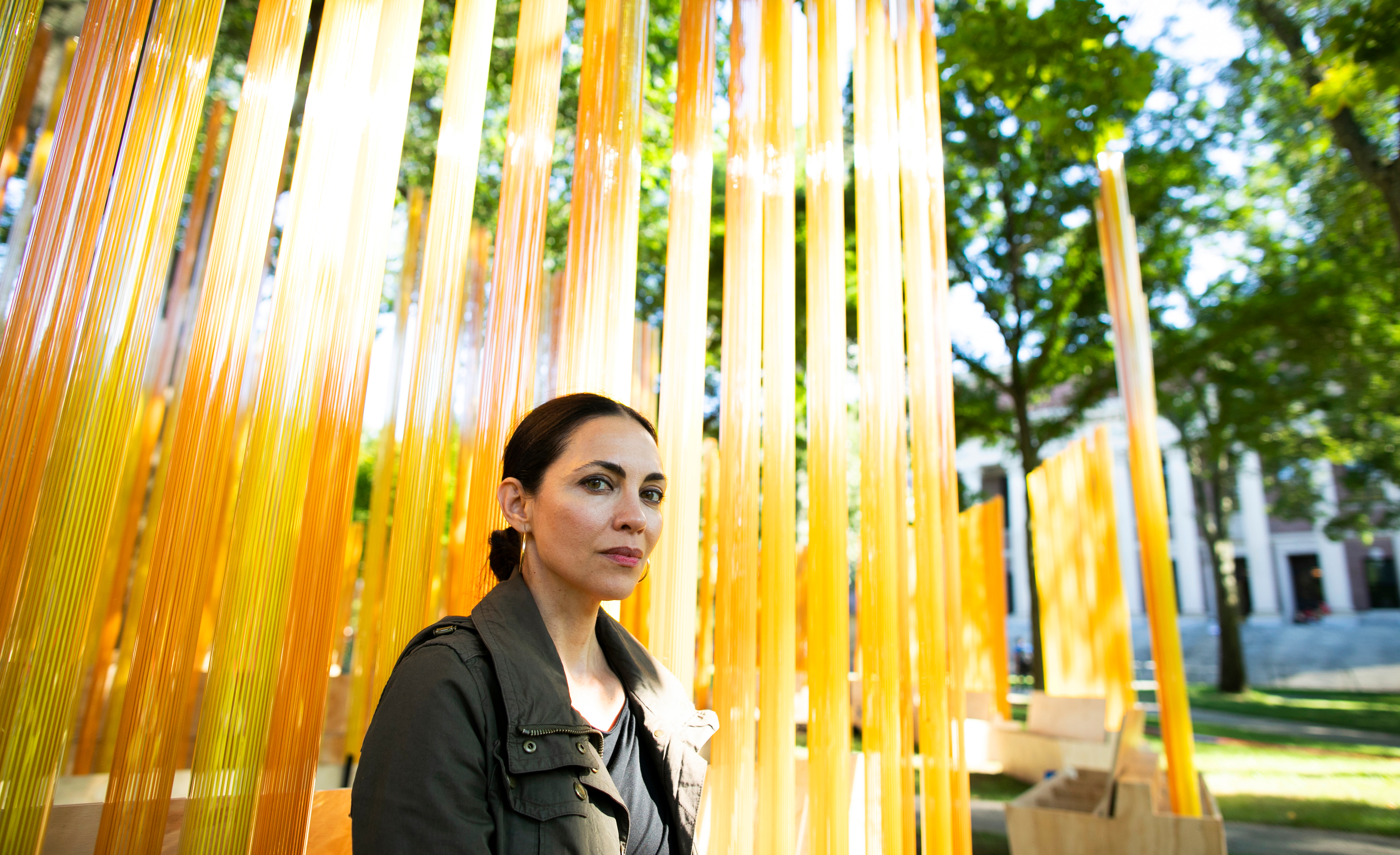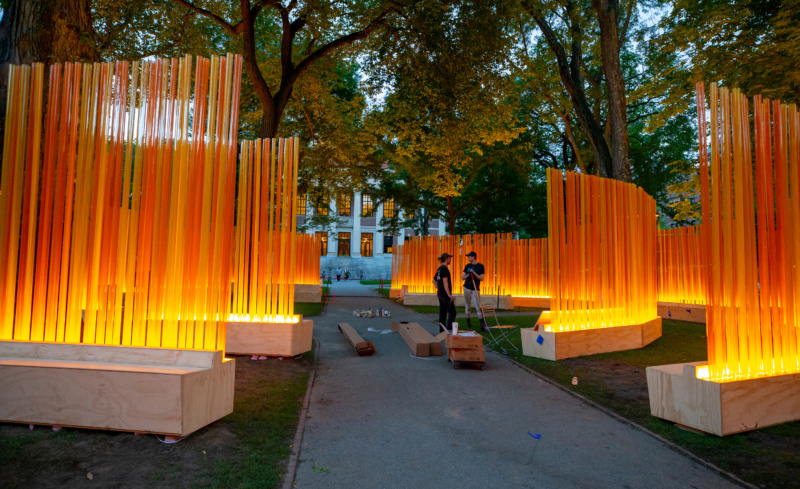
What makes this project stand out to you from other projects you've done? Autumn (…Nothing Personal) is a site-specific sculpture sited in Tercentenary Theatre on the Harvard campus. It consists of thousands of transparent plastic tubes covered in thin pinstripes of burnt orange and yellow hues. I’ve made other works that have that optical, glowing cinematic quality, but this one very deliberately employs the autumn light in both a conceptual and optical way. During the day it feels like an immense zoetrope shimmering and flickering with reflections and shadows of the overhead Elm trees and people moving through it; at night there is lighting built into the work so it looks like fire in the middle of the Yard. It has a very different quality at night and is constantly changing. The work was intended to be activated by students, faculty, staff, and passers-by. It considers the fleeting and somber quality of the autumn season and the almost imperceptibly slow unraveling and ever-shifting movement of people, places and histories. The title is of course also a reference to James Baldwin’s essay Nothing Personal.
I wanted to make a project about transparency, visibility and landscape. Landscape is as much about what you don't see as what you do see. And I often use the word 'landscape' here not in the traditional sense of a vista, or a picturesque scene—but rather, landscape as the history of people in places, which we know is also completely tied to colonialism, power, ownership and all kinds of other complex histories. So, a lot of the aspects of the piece are about that subtle seeing and not seeing, making visible and making opaque, present.
How has the project evolved since its inception to execution? Where there any challenges you faced in making it a reality? It took me some time to understand what kind of project would have most impact here. I knew I wanted to work in Harvard’s iconic Tercentenary Theatre, in many ways the most protected spot on campus. When I make public art—and with this project especially—I was very deliberately trying to create not just a physical, visually alluring structure where people would sit, gather and linger, but also a kind of social structure that’s under the surface and less visible. That’s always the much harder part. I spent almost two years working with a research assistant and meeting countless groups and individuals on campus to make meaning of that land, that site, in all its complexity.

Tell us about your research and the involvement of the students? Part of my preparation for this project included teaching a class at Harvard that I titled "Imagination, Narrative, Democracy: Public Art in Practice."
The students were involved from the beginning in thinking about what it could mean to imbue a built structure with democratic practices and research. The entire project has always been presented as an opportunity for individual students, departments and organizations both on and off campus to program, perform, debate and to have a sort of exposed, public reading of Baldwin’s moving essay that prompts a sense of of public intimacy.
When I make public art, what I’m always seeking to create is that very specific sense of intimacy, not just with the changing light and mood of the physical structure, but also by imagining the kinds of exchanges that may happen there.
How did James Baldwin inspire the title of the project, Autumn (...Nothing Personal)? Baldwin wrote Nothing Personal in 1965, at the height of the civil rights movement and published it in a book by the same title, which was a collaborative project with his high school friend Richard Avedon. The essay is a personal statement about an America full of loneliness, despair and violence, but he also speaks of light and trust. The text is thoroughly unapologetic about calling out American violence, but at the same time, it has a very uplifting, redemptive quality to it. Baldwin prompts us to face one another.
It is this conjunction that inspired my use of the vulnerable light of autumn as a metaphor for a nation still struggling so desperately with the same issues Baldwin so eloquently exposes. I wanted to make a work that was almost camouflaged by the changing colors of autumn in the Yard. While the piece does not change or move, everything around it is in constant flux—leaves turning autumn colors and falling, passers-by animating the scene, activating the work and site with performances and simple gestures of being in the space. I imagine the piece almost like a giant cinematic dissolve that interrupts and disables the idyllic, preserved-postcard view of this iconic yard that is such a protected place in Harvard’s identity. I was especially interested in all of the ways in which the Harvard community already used these public outdoor spaces, from the extremes of casual, social meetings to a more political communal gathering space.



